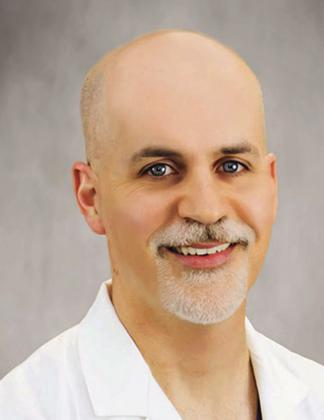Dr. David Kouba’s Mohs fellowship program at The Toledo Clinic has earned accreditation from the Accreditation Council for Graduate Medical Education (ACGME), making it possible for Mohs surgery fellows to train right here in Northwest Ohio.
The ACGME is the governing body that supervises and sets standards for all medical education in the United States and monitors compliance with these standards. Dr. Kouba’s fellowship program is one of only 83 such programs nationwide to merit ACGME accreditation.
“This accreditation is a tremendous benefit for our community, and we’re very honored to receive it,” says Dr. Kouba. “Most Mohs programs are located at major academic institutions, which are considered pillars of the medical community that have the best physicians and provide the highest level of care. The fact that our program was selected for accreditation as one of only 83 programs in the country confirms that we’re the equivalent of any major academic institution as a pillar of Toledo’s medical community.”
Mohs surgeons are in extremely high demand, and this surgery is the most effective technique for treating many non-melanoma skin cancers, allowing for the removal of all cancerous cells for the highest cure rate while sparing healthy tissue. The procedure, including lab work, is done in stages while the patient waits. Mohs surgery is an efficient, cost-effective procedure for patients, being completed in a single visit on an outpatient basis.
Dr. Kouba, who has performed at least 25,000 Mohs surgeries since 2006, describes the procedure as the gold standard for the removal of many basal cell and squamous cell carcinomas and notes that the procedure is quite simple. “The patient is put under local anesthesia, and the cancer is removed, which takes only about five seconds. Then we take the specimen to our in-office lab to perform frozen section histopathology. I’m also the pathologist, so I read the slides taken from the specimen to see if there is cancer on the underside or any of the margins. We map the specimen in such a way that if we see cancer, we know exactly where to go on the patient to remove a bit more and check the margins again. We usually get clean margins within one or two attempts, and the whole procedure takes only about an hour and a half,” he explains.
A major benefit of the Mohs procedure is that the surgeon removes no more tissue than is absolutely necessary and creates the smallest possible defect to reconstruct. “Mohs surgeons are also facial plastic surgeons, so we do the reconstructions right here in the office on the same day. It really is one-stop shopping,” Dr. Kouba adds. Best of all, Mohs has an exceptionally high cure rate—upwards of 99%.
Another advantage of Mohs surgery is its excellent safety profile. The procedure is performed under local anesthesia with the patient awake, so the potential risks associated with general anesthesia are not a factor. Also, it’s not necessary to stop the use of blood thinners prior to the Mohs procedure, eliminating the risk of life-threatening complications for patients who depend on these drugs.
Fellows in Dr. Kouba’s Mohs program at The Toledo Clinic will be exposed to more than 3,000 Mohs surgeries per year, ensuring they will emerge from the program as highly experienced, competent surgeons who can provide optimal outcomes for patients. They will also have the ability to submit research for publication.
Physicians who finish their residency program can apply for this fellowship, and Dr. Kouba’s office will offer one fellowship each academic year, beginning July 1, 2024. ✲


